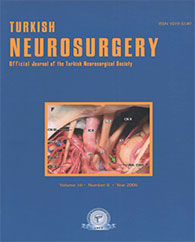METHODS: Between 1990 and 2005, 20 patients (12 males and 8 females) with ages ranging from 13 to 75 years (mean 45 years), presented with CCES due to herniated lumbar discs (group A) and lumbar disc with other spinal pathologies (group B). Five (25%) patients had upper lumbar disc herniation (conus medullaris syndrome) and 15 (75%) also had low lumbar disc herniation, both leading to cauda equina syndrome (CES).
RESULTS: The herniation levels were L5-S1 in 5 (25%), L4-L5 in 5 (25%), L3-L4 in 3 (15%), L2-L3 in 2 (10%), L1-L2 in 3 (15%), and Th12-L1 in 2 (10%) patients. Nine (45%) patients had only lumbar disc herniations (group A), while 11 (55%) patients had other spinal pathologies (group B) including high thecal sack in 1, multilevel disc herniations in 5, stenosis in 3, and tethered cord in 2 patients. Eighteen patients had complete, and 2 patients had incomplete incontinence of urine, stool, or both. At presentation, all were urgently examined with conventional myelography, computed tomography (CT) and magnetic resonance imaging (MRI). All patients had been admitted as emergencies with CCES, and underwent laminectomy and discectomy. Follow-ups ranged from 10 months to 6 years. Postoperatively, only 3 cases (33.3%) improved in Group A. Both sensory and motor symptoms were improved in 2 cases. One case had full motor recovery and minor sensory recovery. Group B patients (n=11) with CCES did not improve. The results of this group were unsatisfactory.
Although 3 CCES cases undergoing early surgery showed improvement, cases operated on later did not.
CONCLUSION: If there are additional spinal pathologies, the prognosis is very poor. This unique study had a long follow-up duration. We review the current literature on major neurological deficits (conus medullaris and cauda equina syndromes) and available treatment options.
Keywords : Lumbar disc herniation, spinal pathology, cauda equina syndrome




